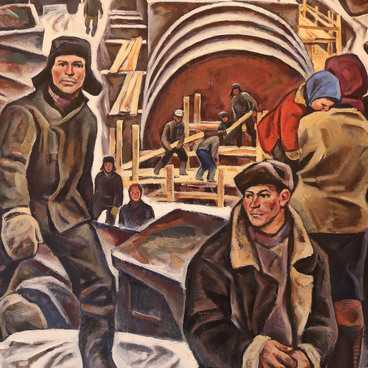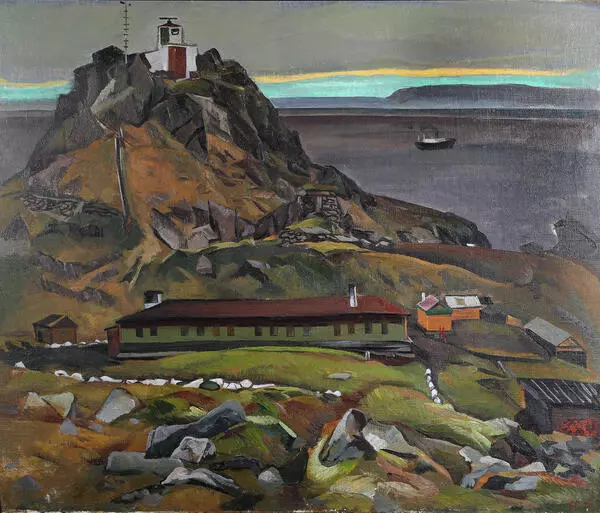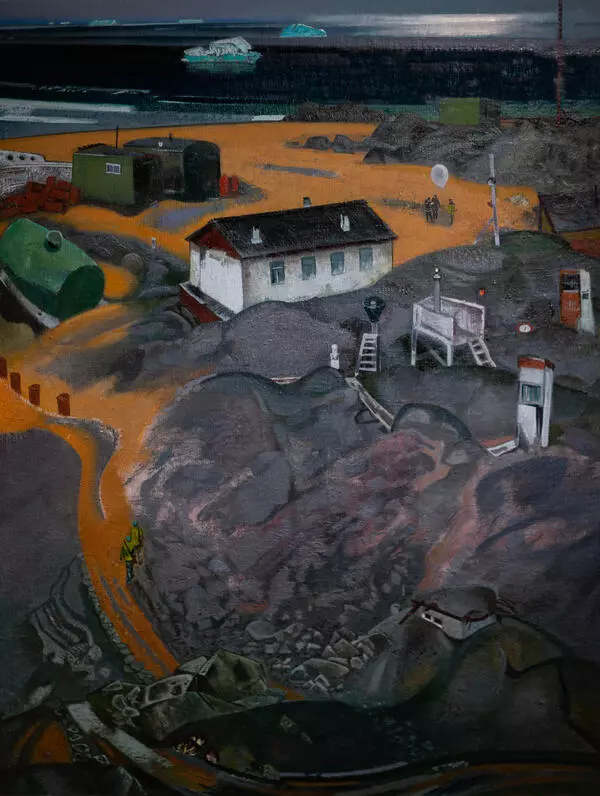The Ural painter Yevgeny Gudin was highly appreciative of nature and devoted his entire career to depicting it. He only worked in the genre of landscape. The artist was in constant search for its secrets, mastering the rules of harmony and revealing with his brush the life-affirming power of nature and the human-nature relationship.
Judging by his style and choice of imagery, Yevgeny Gudin was part of the “austere style” movement and practiced its principles in his landscape painting.
The artist traveled a lot across the country and dedicated many of his artworks to the northern nature views, as well as winter ones. The restrained colors are associated with the severity of the landscapes. The artist had to use a complex cold color palette, which addressed the landscape as concise and devoid of expressiveness but still full of emotion and meaning at the same time.
Those features also found their way into the winter landscape “The Village of Sargaya”, where Yevgeny Gudin depicted the foreground as snowbound wooden houses of the village resting on the banks of the Ufa River, at the mouth of the right tributary of the Sargaya River, located in the Krasnoufimsky district of Sverdlovsk Oblast. The village is surrounded by the picturesque Ural Mountains that stand gloom and majestic in the background, behind the river covered with ice and snow.
Many of Yevgeny Gudin’s landscapes follow a certain restrained yet balanced narrative that enlivens the artist’s paintings with small staffage (secondary) figures. “The Village of Sargaya” features small silhouettes of people near the houses.
The landscape was painted by Yevgeny Gudin in 1970 around the time when the famous Soviet television series “Shadows Disappear at Noon” was being filmed in the vicinity of the villages of Sarana and Sargaya with local people engaged in the crowd scenes.
Since the early 1990s, the village became recognizable: the oldest site of primitive culture in Sverdlovsk Oblast was discovered there thanks to archaeological excavations carried out 15 kilometers from the village in the Bobylyok Grotto. Today, the Bobylyok Grotto is known as a multilayered archaeological monument of the late Upper Paleolithic.
Judging by his style and choice of imagery, Yevgeny Gudin was part of the “austere style” movement and practiced its principles in his landscape painting.
The artist traveled a lot across the country and dedicated many of his artworks to the northern nature views, as well as winter ones. The restrained colors are associated with the severity of the landscapes. The artist had to use a complex cold color palette, which addressed the landscape as concise and devoid of expressiveness but still full of emotion and meaning at the same time.
Those features also found their way into the winter landscape “The Village of Sargaya”, where Yevgeny Gudin depicted the foreground as snowbound wooden houses of the village resting on the banks of the Ufa River, at the mouth of the right tributary of the Sargaya River, located in the Krasnoufimsky district of Sverdlovsk Oblast. The village is surrounded by the picturesque Ural Mountains that stand gloom and majestic in the background, behind the river covered with ice and snow.
Many of Yevgeny Gudin’s landscapes follow a certain restrained yet balanced narrative that enlivens the artist’s paintings with small staffage (secondary) figures. “The Village of Sargaya” features small silhouettes of people near the houses.
The landscape was painted by Yevgeny Gudin in 1970 around the time when the famous Soviet television series “Shadows Disappear at Noon” was being filmed in the vicinity of the villages of Sarana and Sargaya with local people engaged in the crowd scenes.
Since the early 1990s, the village became recognizable: the oldest site of primitive culture in Sverdlovsk Oblast was discovered there thanks to archaeological excavations carried out 15 kilometers from the village in the Bobylyok Grotto. Today, the Bobylyok Grotto is known as a multilayered archaeological monument of the late Upper Paleolithic.



